Chris Larson ... "Great plant. Down here they do flower sort of properly. As you can see from my BCR photo, you need to put on your glasses to see the flowers or use a magnifying glass."
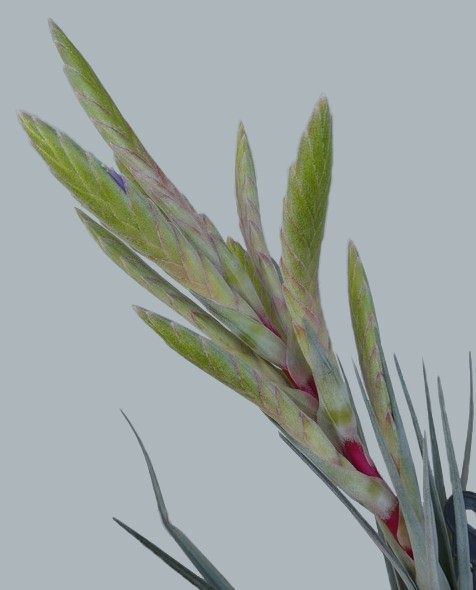
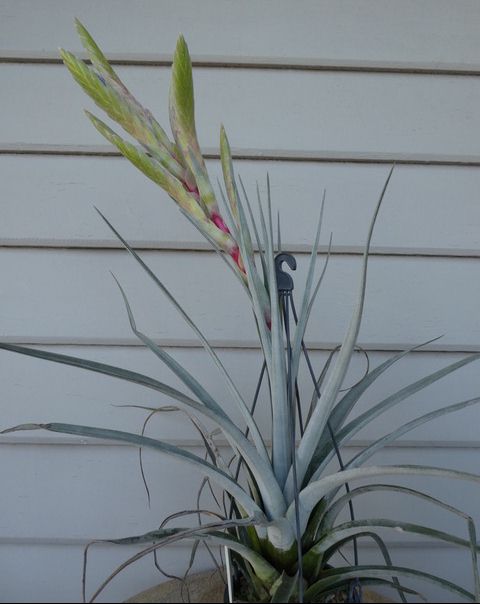
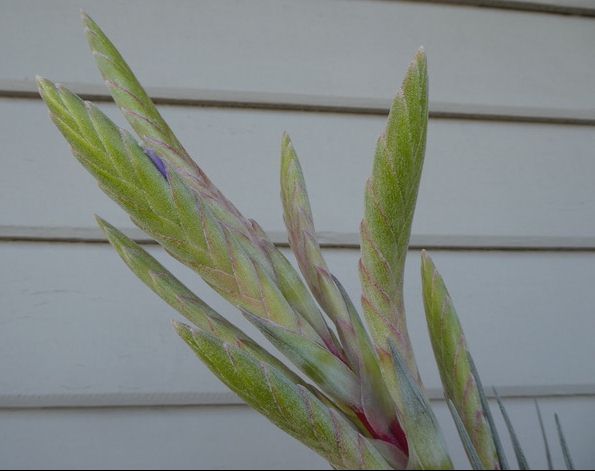
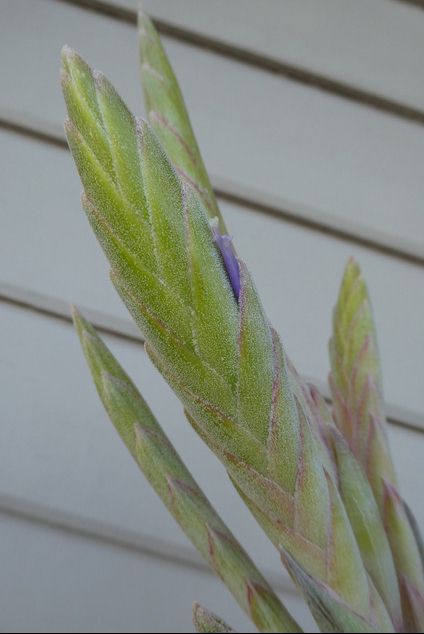
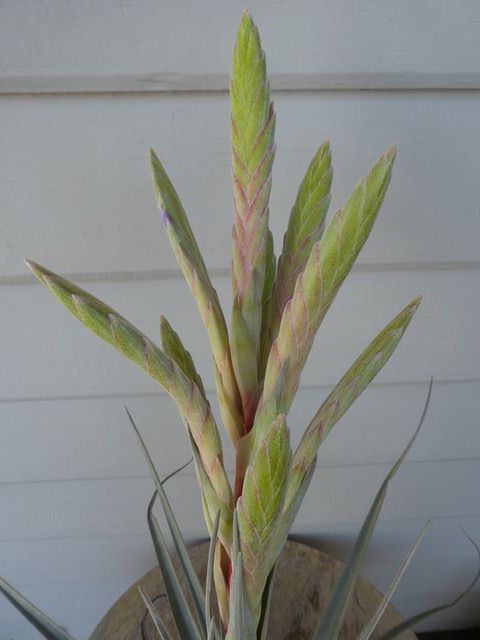
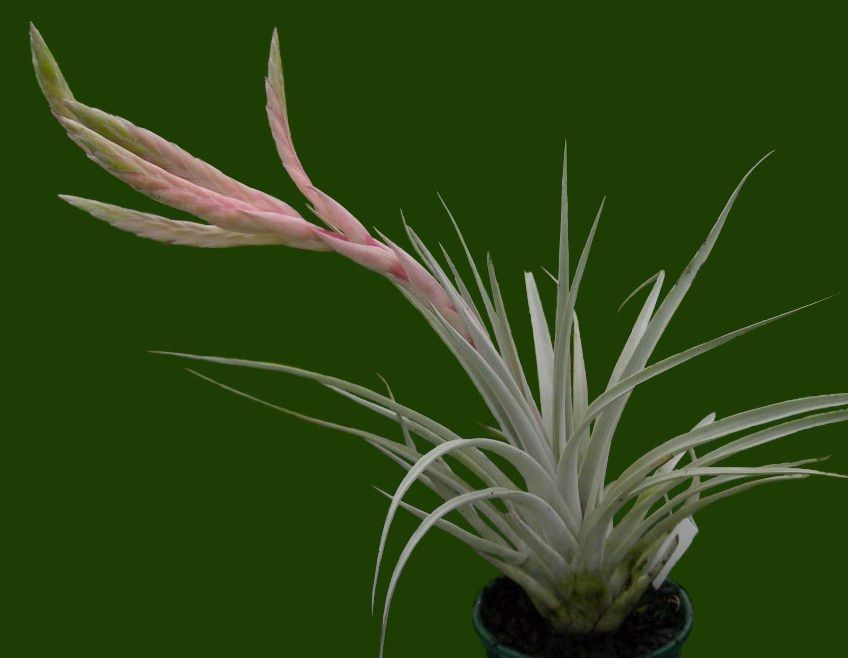
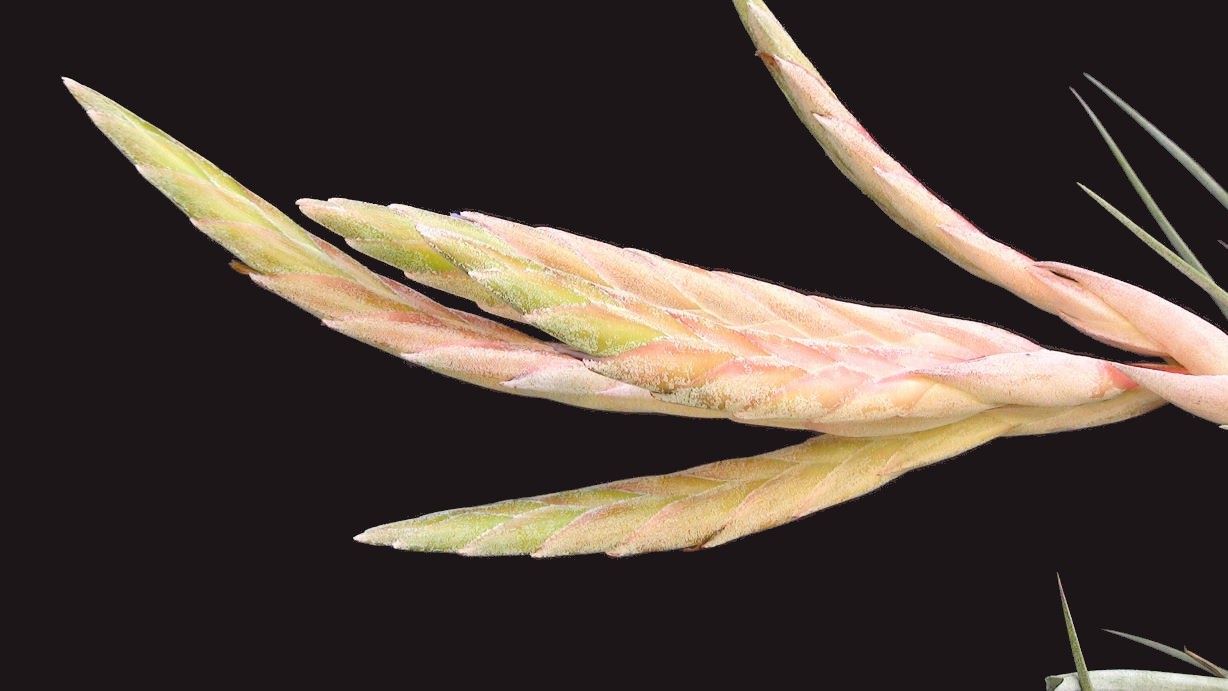
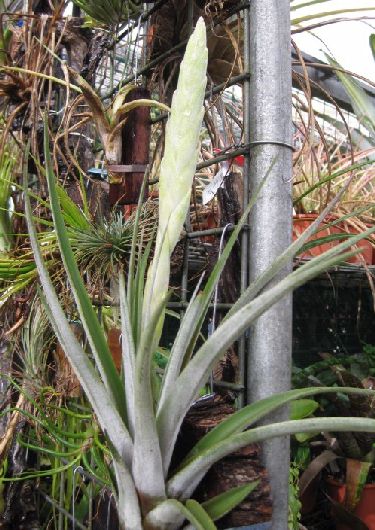
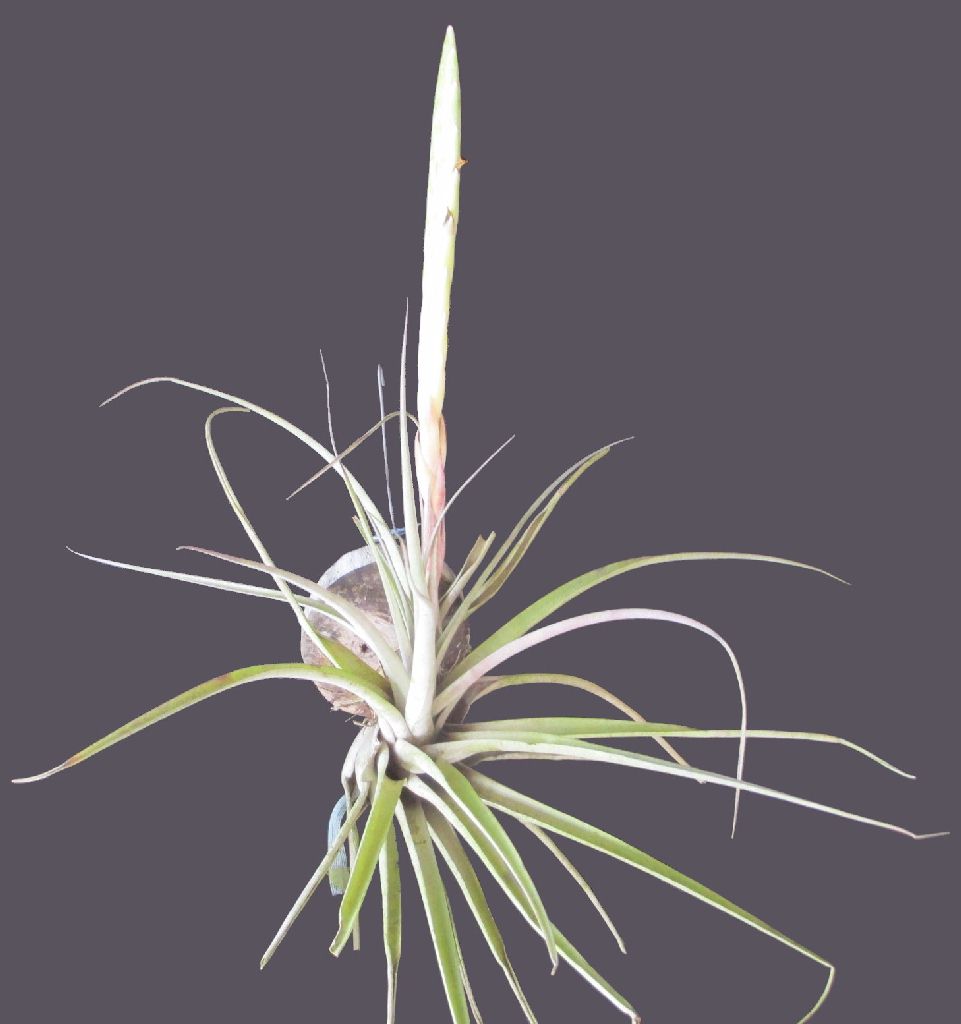
From Geoff Lawn.... "I have included Pam Hyatt in this discussion because I note differences in bract colour between Chris Larson's photo specimen (pink bracts) and Bob Hudson's whitish bracts. Is this cultural/climatic and/or genetic variation ? So my question is: does this cultivar breed "true" from seed or is there variation to warrant registering more than 1 clone ?
Pam, did you find variation in bract colour and spike branching in your seed-grown progeny ?"
9/10/12 Chris Larson... "The spike stays silver under my conditions until after anthesis. I have flowered this plant twice & both times the pink colour has appeared well after (2 weeks?) I have seen flowers.
My second flowering, in the same spot, has flowered at 2/3 the size of the first flowering, and only has a single spike.
8/03/2013, Pamela Hyatt....
"I have some comments on Tillandsia Silver Sword. (ed. there is another BCR Silver Sword already, so Silver "Spike" will be used for this plant)
It seems that a lot of confusion has been created by a wrong label, that has followed this plant for many years. I have now gone through all my records and here is what has happened.
This plant is associated with our stock number TX111. Several plants were sold with a label which said "T. beutelspacheri hybrid" or T. beutelspacheri x captiata hybrid (006) Arden"
For reference-T. capitata hybrid (006) is a John Arden capitata hybrid.
After reviewing my records here is the history:
In early 1990's, I made several cross onto one T. beutelspacheri spike.
Plants that were pollinated onto the T. beutelspacheri were - T. capitata hybrid (006) Arden, T. xiphioides, (T. balbisiana x fasciculata), T. capitata rubra, T. chiapensis, and T. fasciculata (Arden). T. fasciculata (Arden) means that I acquired this clone from Arden.
A notation on the seed Tray map (dated 6/6/96) indicates that the seed were mixed up and placed on the tray together. So any of these possible crosses could have occurred. When the plants grew up enough to be potted, the only information that went on the label was:
"T. beutelspacheri x capitata (006) Arden", and it was given our stock number TX111, and all the plants looked similair.
This would mean that T. beutelspacheri was the seed parent and T. capitata (006) Adren was the pollen parent. Again, T. capitata (006) Arden was actually a T. capitata hybrid that Arden made. As the plants grew up, it was apparent that there was no T. capitata in them. Instead of checking the records to verify what the cross might have been, someone changed the labels to "T. beutelspacheri" and/or T. beutelspacheri hybrid (Arden). Therefore it was thought that Arden made the cross. But that is incorrect.
When Geoff contacted me about the coloring in the spikes I started to investigate. (Sorry it has taken so long to get this figured out). I spoke with John Arden and he has no recollection of making the cross. I do recall giving John some of the seed as T. beutelsbacheri, which might explain how Bob Hudson acquired them. After investigating my records it is clear that I made the cross in approx. 1994, and that the pollen parent is T. chiapensis.
As the plants have bloomed, it is clear that the only possiblity is - T. beutelspacheri x chiapensis.
Spikes and color:
When the plants have bloomed small, they will have only one single spike.
This year the plants are larger then ever and have a branched spike. This year, they are also erect. Sometimes they are slightly pendant as in T. beutelspacheri.
I grow them in fairly strong light, and you can see that they do color, but it takes quite a while for them to color. They start off whitish/silver and progress to slightly pink with a tinge of yellow.
The foliage is lepidote.
Cheers, pam
Bob Hudson 06/17 ... "The flowers do not protrude out of the bracts."
Chris Larson ... "Great plant. Down here they do flower sort of properly. As you can see from my BCR photo, you need to put on your glasses to see the flowers or use a magnifying glass."




